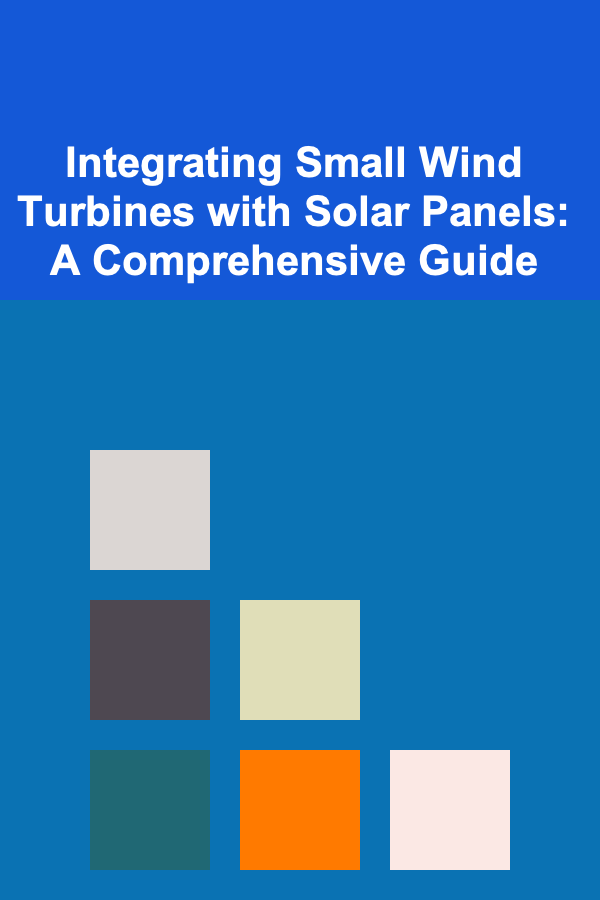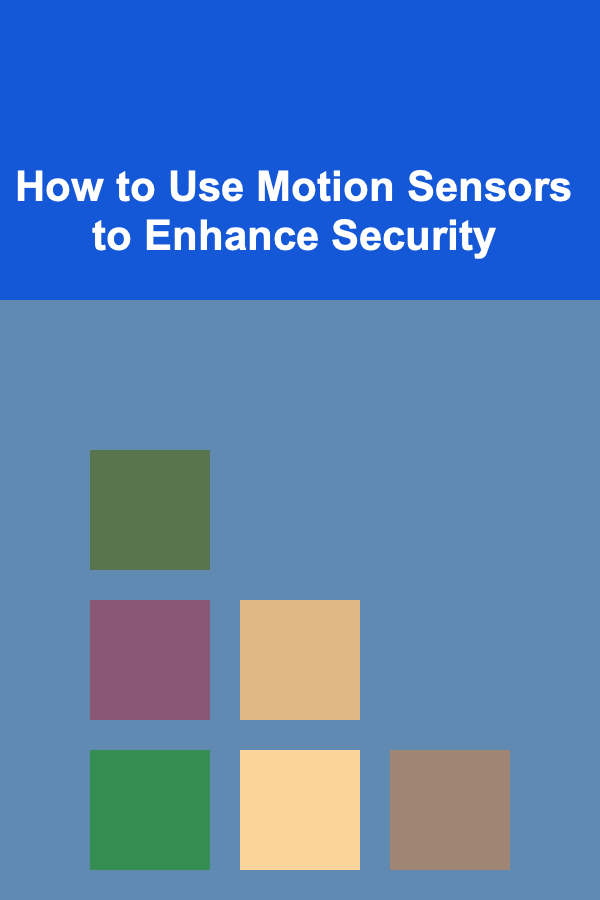
Integrating Small Wind Turbines with Solar Panels: A Comprehensive Guide
ebook include PDF & Audio bundle (Micro Guide)
$12.99$8.99
Limited Time Offer! Order within the next:

As the world grapples with the urgent need for sustainable energy solutions, the integration of renewable energy sources is becoming increasingly crucial. Combining solar panels and small wind turbines offers a compelling pathway to generate clean energy, reduce reliance on fossil fuels, and enhance energy independence. This comprehensive guide explores the benefits, challenges, and practical considerations of integrating small wind turbines with solar panels, providing insights for homeowners, businesses, and communities seeking to harness the power of complementary renewable resources.
Why Integrate Wind and Solar? Synergies and Advantages
The appeal of integrating small wind turbines and solar panels lies in their inherent complementarity. Solar energy production peaks during daylight hours, while wind speeds often increase during the evening and nighttime. This asynchronous generation pattern provides a more consistent and reliable energy supply than either technology could achieve alone. This synergy offers several significant advantages:
- Improved Energy Reliability: Solar and wind systems compensate for each other's intermittency. When the sun isn't shining, the wind may be blowing, and vice-versa. This reduces dependence on grid electricity and energy storage.
- Increased Energy Independence: By generating more of their own electricity, users can decrease their reliance on traditional utility companies and fluctuating energy prices.
- Reduced Carbon Footprint: Generating electricity from renewable sources drastically reduces greenhouse gas emissions compared to fossil fuel-based power plants.
- Cost Savings: Although the initial investment can be significant, the long-term cost savings from reduced electricity bills can be substantial. Government incentives and tax credits can further offset the initial expense.
- Enhanced Grid Resilience: Distributed generation from combined wind and solar systems can contribute to a more resilient and decentralized energy grid, reducing vulnerability to large-scale outages.
Understanding Small Wind Turbines and Solar Panels
Before delving into the integration process, it's essential to understand the fundamentals of each technology:
Small Wind Turbines
Small wind turbines are typically defined as turbines with a rated capacity of up to 100 kilowatts (kW). These turbines can be either horizontal-axis (HAWT) or vertical-axis (VAWT) designs. HAWTs are the most common type and resemble airplane propellers. VAWTs have blades that rotate around a vertical axis and are often considered more suitable for urban environments due to their smaller footprint and ability to accept wind from any direction.
Key considerations for small wind turbine selection include:
- Rated Power: Determines the maximum power output of the turbine under ideal wind conditions.
- Rotor Diameter: Larger rotor diameters capture more wind energy.
- Cut-in Speed: The minimum wind speed required for the turbine to start generating electricity.
- Cut-out Speed: The maximum wind speed at which the turbine will shut down to prevent damage.
- Tower Height: Higher towers generally experience stronger and more consistent winds.
- Noise Level: Wind turbines can generate noise, which may be a concern in residential areas.
- Durability and Maintenance: Consider the turbine's expected lifespan and maintenance requirements.
Solar Panels (Photovoltaic - PV)
Solar panels, also known as photovoltaic (PV) panels, convert sunlight directly into electricity using semiconductor materials. Different types of solar panels exist, including monocrystalline, polycrystalline, and thin-film panels. Monocrystalline panels are generally the most efficient but also the most expensive. Polycrystalline panels offer a good balance of efficiency and cost, while thin-film panels are less efficient but more flexible and can be integrated into building materials.
Key considerations for solar panel selection include:
- Panel Efficiency: The percentage of sunlight that the panel converts into electricity.
- Power Rating: The maximum power output of the panel under standard test conditions (STC).
- Temperature Coefficient: How the panel's performance changes with temperature. Higher temperatures can reduce panel efficiency.
- Durability and Lifespan: Solar panels typically have a lifespan of 25-30 years.
- Warranty: Check the manufacturer's warranty for performance and defects.
Planning and Design Considerations for Integrated Systems
Proper planning and design are crucial for maximizing the benefits of an integrated wind and solar system. Here are some key considerations:
1. Site Assessment
A thorough site assessment is the first step in determining the feasibility of an integrated system. This involves evaluating several factors:
- Wind Resource Assessment: Measuring wind speeds and direction over a period of time to determine the local wind resource. This can be done using anemometers and data loggers. Consider seasonal variations and prevailing wind patterns.
- Solar Resource Assessment: Determining the amount of sunlight available at the site. This can be done using solar irradiance maps, online tools, and on-site measurements with a pyranometer. Consider shading from trees, buildings, and other obstructions.
- Geographic Location: The latitude and longitude of the site will influence the amount of sunlight and wind available.
- Local Regulations and Zoning: Check local zoning ordinances and building codes to ensure that wind turbines and solar panels are permitted in the area. Permitting processes can be complex and time-consuming.
- Environmental Impact Assessment: Consider the potential environmental impacts of the system, such as noise pollution from wind turbines and visual impact on the landscape.
- Soil Conditions: The soil must be suitable for supporting the wind turbine tower. A geotechnical investigation may be required to assess soil stability.
- Proximity to Grid: If the system will be connected to the grid, determine the distance to the nearest utility connection point. Longer distances can increase installation costs.
2. Load Analysis
Understanding the energy consumption patterns of the building or facility is essential for sizing the system appropriately. This involves analyzing electricity bills and identifying the peak demand and overall energy usage. Consider future energy needs and potential load growth.
3. System Sizing and Design
Based on the site assessment and load analysis, the system can be sized to meet the energy needs of the building or facility. This involves determining the appropriate size and number of solar panels and wind turbines, as well as the battery storage capacity (if applicable).
Several factors influence system sizing:
- Energy Needs: The total amount of electricity required by the building or facility.
- Wind and Solar Resource Availability: The amount of wind and sunlight available at the site.
- System Performance: The efficiency of the solar panels and wind turbines.
- Budget: The total budget allocated for the system.
- Desired Level of Energy Independence: The extent to which the user wants to be independent from the grid.
Software tools can be used to simulate the performance of the integrated system and optimize the sizing and design.
4. Component Selection
Choosing high-quality components is crucial for ensuring the long-term performance and reliability of the system. This includes selecting reputable manufacturers for solar panels, wind turbines, inverters, batteries (if applicable), and mounting hardware.
Key considerations for component selection include:
- Performance: Choose components with high efficiency and performance ratings.
- Reliability: Select components with a proven track record of reliability and durability.
- Warranty: Look for components with comprehensive warranties.
- Cost: Balance cost with performance and reliability.
- Compatibility: Ensure that all components are compatible with each other.
5. Grid Connection (if applicable)
If the system will be connected to the grid, it must comply with the utility's interconnection requirements. This typically involves installing a grid-tie inverter and obtaining approval from the utility company. Net metering policies allow users to receive credit for excess electricity that they send back to the grid.
6. Permitting and Regulations
Obtain all necessary permits and approvals from local and state authorities before installing the system. This may involve submitting building plans, environmental impact assessments, and other documentation.
Technical Integration: Connecting Wind and Solar
The technical integration of wind and solar systems involves connecting the electrical outputs of the solar panels and wind turbines to a common point, such as an inverter or charge controller. There are several different approaches to integrating these systems:
1. AC Coupling
In AC coupling, the solar panels and wind turbine each have their own inverters that convert the DC electricity they generate into AC electricity. These AC outputs are then connected to a common AC bus, which can be connected to the grid or to a battery storage system. AC coupling is a relatively simple integration method, but it can be less efficient than DC coupling.
2. DC Coupling
In DC coupling, the DC outputs of the solar panels and wind turbine are connected to a common DC bus, which is then connected to a charge controller and a battery storage system. The charge controller regulates the flow of electricity to the batteries, preventing overcharging and maximizing battery life. A DC-to-AC inverter converts the DC electricity from the batteries into AC electricity for use in the building or facility. DC coupling is generally more efficient than AC coupling, but it requires more complex wiring and control.
3. Hybrid Inverter
Hybrid inverters are designed specifically for integrated wind and solar systems. These inverters can accept both DC and AC inputs and can manage the flow of electricity to the batteries, the grid, and the load. Hybrid inverters offer a simplified integration approach and can optimize the performance of the system.
4. Charge Controllers
Charge controllers are essential for managing the flow of electricity from the solar panels and wind turbine to the batteries. They prevent overcharging and undercharging of the batteries, maximizing battery life and system performance. MPPT (Maximum Power Point Tracking) charge controllers are more efficient than PWM (Pulse Width Modulation) charge controllers, as they can extract the maximum power from the solar panels and wind turbine.
5. Battery Storage
Battery storage can be used to store excess electricity generated by the solar panels and wind turbine for use when the sun isn't shining and the wind isn't blowing. This can improve the reliability and energy independence of the system. Different types of batteries are available, including lead-acid, lithium-ion, and flow batteries. Lithium-ion batteries are generally preferred due to their higher energy density, longer lifespan, and lower maintenance requirements.
Monitoring and Control
Monitoring and control systems are essential for tracking the performance of the integrated wind and solar system and optimizing its operation. These systems can provide real-time data on energy production, consumption, battery state of charge, and system status. This data can be used to identify potential problems and make adjustments to the system to improve its performance.
Key features of monitoring and control systems include:
- Remote Monitoring: Allows users to monitor the system remotely via the internet or a mobile app.
- Data Logging: Records historical data on system performance.
- Alerts and Notifications: Sends alerts when potential problems are detected.
- Automated Control: Automatically adjusts the system's operation based on real-time conditions.
Challenges and Mitigation Strategies
While integrating small wind turbines and solar panels offers numerous benefits, it also presents several challenges:
1. Intermittency of Renewable Resources
Both solar and wind resources are intermittent, meaning that their availability can vary significantly over time. This intermittency can be addressed through battery storage, grid connection, and demand-side management.
2. High Initial Costs
The initial cost of installing an integrated wind and solar system can be significant. However, government incentives, tax credits, and long-term cost savings can help offset the initial expense. Consider financing options and leasing programs.
3. Permitting and Regulatory Hurdles
Obtaining the necessary permits and approvals for wind turbines and solar panels can be a complex and time-consuming process. Work with experienced installers and consultants who are familiar with local regulations.
4. Noise Pollution from Wind Turbines
Wind turbines can generate noise, which may be a concern in residential areas. Choose turbines with low noise emissions and locate them away from noise-sensitive areas.
5. Visual Impact of Wind Turbines and Solar Panels
Some people may find wind turbines and solar panels to be visually unappealing. Consider the aesthetic impact of the system and choose components that blend in with the surrounding environment.
6. Maintenance Requirements
Wind turbines and solar panels require regular maintenance to ensure their long-term performance and reliability. Develop a maintenance plan and schedule regular inspections.
Case Studies and Examples
Several successful examples demonstrate the benefits of integrating small wind turbines and solar panels:
- Off-Grid Homes: Many off-grid homes rely on integrated wind and solar systems to provide a reliable and sustainable source of electricity. These systems often include battery storage to ensure a continuous power supply.
- Agricultural Operations: Farms and ranches can use integrated wind and solar systems to power irrigation pumps, lighting, and other equipment, reducing their reliance on grid electricity and lowering their operating costs.
- Remote Communities: Integrated wind and solar systems can provide electricity to remote communities that are not connected to the grid, improving their quality of life and fostering economic development.
- Commercial Buildings: Businesses can install integrated wind and solar systems to reduce their carbon footprint and lower their electricity bills.
Future Trends and Innovations
The field of integrated wind and solar systems is constantly evolving, with new technologies and innovations emerging all the time. Some key trends include:
- Improved Battery Storage Technologies: Advances in battery technology are leading to higher energy density, longer lifespan, and lower costs.
- Smart Grid Integration: Integrated wind and solar systems are becoming increasingly integrated with the smart grid, allowing for more efficient management of energy resources.
- Microgrids: Microgrids are self-contained energy systems that can operate independently from the main grid. Integrated wind and solar systems are well-suited for microgrid applications.
- Building Integrated Photovoltaics (BIPV): BIPV technology integrates solar panels into building materials, such as roofing tiles and facades, reducing the visual impact of solar panels.
- More Efficient Wind Turbine Designs: Ongoing research and development are leading to more efficient and reliable wind turbine designs.
Conclusion
Integrating small wind turbines with solar panels offers a powerful and sustainable solution for generating clean energy, reducing reliance on fossil fuels, and enhancing energy independence. By carefully considering the planning, design, technical integration, and monitoring aspects, homeowners, businesses, and communities can harness the complementary strengths of wind and solar energy to create a more resilient and environmentally friendly energy future. While challenges exist, ongoing technological advancements and supportive policies are making integrated wind and solar systems increasingly attractive and economically viable. As the demand for clean energy continues to grow, the integration of wind and solar power will play a critical role in shaping a sustainable energy landscape.
Reading More From Our Other Websites
- [Personal Care Tips 101] How to Exfoliate Properly Without Irritating Your Skin
- [Digital Decluttering Tip 101] Password Vault Mastery: How to Choose, Store, and Keep Your Credentials Safe
- [Biking 101] How to Maximize Your Cycling Workout for Endurance and Strength
- [Personal Financial Planning 101] How to Plan for Major Life Events: Weddings, Home Buying, and More
- [Personal Care Tips 101] How to Compare Different Types of Nail Polish Removers
- [Scrapbooking Tip 101] Best Techniques for Using Washi Tape as Decorative Borders in Scrapbooks
- [Organization Tip 101] How to Create DIY Organization Solutions for Craft Supplies
- [Personal Finance Management 101] How to Maximize Your Health Savings Account (HSA) for Tax-Free Growth
- [Sewing Tip 101] Stitch by Stitch: Getting Started with Hobby Sewing
- [Home Staging 101] How to Stage Your Home for a Summer Sale

How to Improve Home Security with Simple DIY Projects
Read More
How to Use Curtains and Blinds to Minimize Noise
Read More
How to Use Motion Sensors to Enhance Security
Read More
How to Use Technology for Virtual Family Game Nights
Read More
How to Use Inspirational Quotes to Boost Your Productivity
Read More
10 Tips for Maximizing Investment Interest Expense Deductions
Read MoreOther Products

How to Improve Home Security with Simple DIY Projects
Read More
How to Use Curtains and Blinds to Minimize Noise
Read More
How to Use Motion Sensors to Enhance Security
Read More
How to Use Technology for Virtual Family Game Nights
Read More
How to Use Inspirational Quotes to Boost Your Productivity
Read More